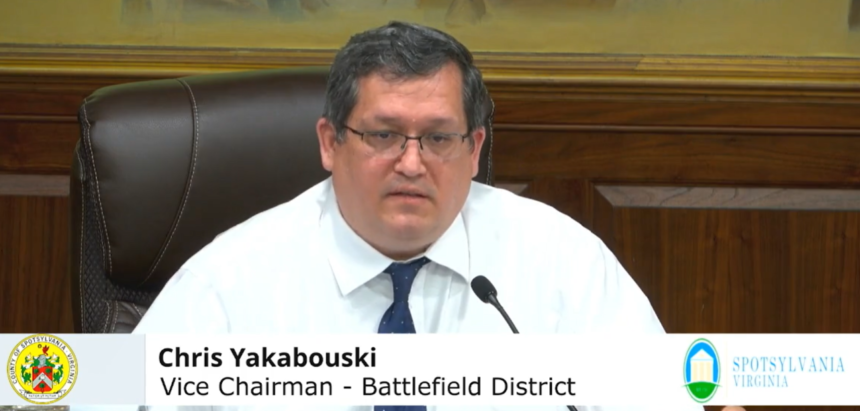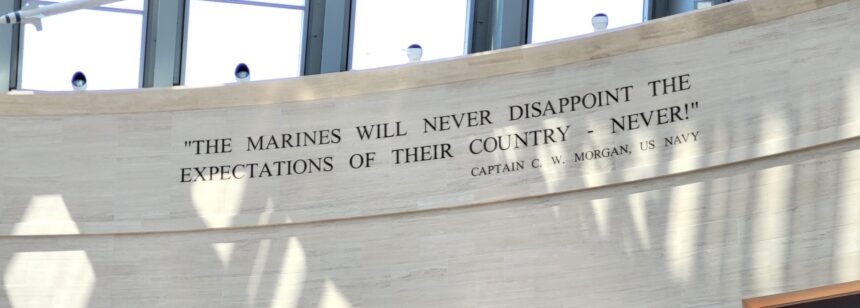
Recent moves by Mary Washington Healthcare, coupled with generous executive salaries, raises important questions.
by Martin Davis
EDITOR-IN-CHIEF
Last week’s announcement that talks between Mary Washington Healthcare and the Lloyd Moss Free Clinic had broken down represents not just a failure to care for those in our community who don’t have access to adequate—or any—health insurance.
It is one more decision in a string of troubling actions taken by the MWHC leadership team over the past several years. These decisions have occurred against the backdrop of a rising compensation package for the chief executive officer.
As a nonprofit hospital, Mary Washington is by law required to return “community benefit” to the region that it serves. Many would also argue that MWHC has a moral obligation to place people over profits.
Whether the hospital is meeting these obligations is open for interpretation. But the question bears examining.
Improving Medical Care, Aggressive Collections
Designated as a short-term acute care hospital by the American Hospital Directory, MWHC does have accomplishments over the past two decades that it should be rightly proud of, both in the level of care that it provides and the quality of that care.
US News & World Report ranks the hospital #7 in the state of Virginia, recognizing it as “High Performing” in 12 Procedures/Conditions, and it earned its status as a Trauma II hospital in 2019. The announcement in 2022 that MWHC is launching a residency program that will house 60 doctors is also a notable accomplishment that will add much-needed primary care doctors to our region.
These accomplishments, however, must be balanced against the troubling decisions that affect vulnerable populations that this hospital leadership has made since at least 2019.
In that year, NPR did a story on MWHC’s proclivity for suing patients over unpaid bills.
“When patients don’t pay their hospital bills,” begins NPR’s Story, “some hospitals respond with lawsuits. A study published today in the Journal of the American Medical Association finds about a third of hospitals in Virginia take that route. One of them, Mary Washington Hospital in Fredericksburg, files so many lawsuits against patients that the second Friday of every month is reserved for them at the local courthouse. And this month, 300 cases were on the docket.”
Just a few days after the report aired, MWHC suspended the practice.
Community Benefit
Because Mary Washington Hospital is a nonprofit organization, it has a legal obligation to provide “Community benefit.” This requirement was first set in IRS regulations in 1956; strengthened in 1969 following the advent of Medicare and Medicaid, and again strengthened in 2010 under the Affordable Care Act, which requires nonprofits to conduct a community health needs assessment every three years, along with an implementation plan.
Jonathan Wynn and Daniel Skinner, however, have argued that the guidelines are vague, as there is no set percentage of a hospital’s revenues or profits that is required.
Lacking clear legal guidelines about what nonprofit hospitals should do for those less fortunate, hospitals’ actions in this area necessarily draw closer scrutiny.
This year, the Advance has already reported on two significantly troubling actions taken by Mary Washington Healthcare that directly affect more-vulnerable people in our community.
On February 14, we broke the news that MWHC would close KinderCare—a childcare center on the hospital campus that enjoys both a reputation for excellent care and is used by many who work at the hospital—because MWHC had plans to repurpose the building.
The announcement touched a nerve in the community, with parents’ online forums lighting up. The announcement was the proverbial straw that broke the camel’s back, as childcare has become as hard to find as affordable housing in the region. It also left some to wonder how in touch with the community’s needs the hospital’s leadership is.
A week later MWHC got the message and reversed course, saying that KinderCare would have its lease extended until a new home could be found for the center.
That misstep may have been overlooked had it not come on the heels of another misstep, when the Advance reported that MWHC was making changes in its arrangement with the Lloyd Moss Free Clinic that would jeopardize its ability to survive.
As we reported, “in October 2023, clinic staff received a new, one-year lease for the rental of its building. Effective in January of this year, the annual base rent is still $1, but the clinic would now be responsible for “additional rent” to cover “operating expenses” at a cost of $10,650.47 per month.
This shock was on top of MWHC’s decision to no longer provide IT, accounting, and payroll services. Replacing these services will cost the clinic another $10,300 a month to cover.
This for a clinic that in 2022 saw 1,147 patients for a total of 5,454 medical and specialty visits; 1,194 dental visits; and 919 mental health visits—and it filled 15,142 prescriptions.
In its press release about the breakoff in negotiations with Moss on Friday, MWHC said:
“MWHC honors the Moss Clinic’s decision to remain independent and plans to continue to support the Clinic by allowing it to use the MWHC facility it currently occupies for $1 per year” wrote Emily Thurston, director of marketing and communications, in the statement.
Bruce Davis, chair of the MWHC Board of Trustees, said: “Despite our shared missions, recent communications have made it clear that we cannot continue our efforts to try to work together to remedy the financial circumstance the Clinic finds itself in.”
Left out of the release was any word about the additional rent Moss is being charged by MWHC, as well as anything about the IT, payroll, and accounting services MWHC has taken away.
Another shock to the community came in March, when MWHC’s plans to expand Snowden House became public. As we first reported: “Mary Washington Healthcare is seeking approval to build a conference center and new medical clinic and construct an addition to Snowden House, a historic structure on the hospital campus that is used for ‘meetings, receptions, and fundraising activities,’ according to the MWHC website.”
The most disturbing part of the announcement involved, again, Kids Station.
“The new 24,500-square-foot two-story medical clinic will replace the building that currently houses Kids’ Station, the daycare and preschool that currently provides subsidized care for MWHC employees.
Executive Compensation
Nationwide, there have been a number of concerns raised about the salaries that nonprofit hospitals are paying their top executives.
Cause IQ has studied these salaries and found that “The CEOs that run these tax-exempt hospitals are among the highest paid nonprofit executives in the United States.”
The report continues: “The average nonprofit hospital CEO makes $660,000 in total compensation (base salary, bonus, and benefits) per year. Most of these CEOs make between $214,429 and $834,631 per year, with top five percent of nonprofit hospital CEOs making more than $2,000,482 per year.”
It’s not the only organization to raise questions about the salaries these executives are earning. In 2022, the New York Times did a series entitled Profits over Patients that explored the troubling trend in escalating executive salaries in nonprofit hospitals.
Given the overall concern about salaries, questions about how much nonprofit hospitals should dedicate to community benefit, and the recent actions of MWHC outlined above, the Advance looked into executive compensation at Mary Washington Hospital.
The information, which is publicly available via MWHC’s 990 tax filing, reveals a well-paid legion of leaders.
In 2022, the last year for which tax filings are available, Schedule J shows CEO Mike McDermott’s total package worth $1,850,329. In addition, there are an additional 21 individuals carrying the title of vice president or above. The highest paid is a senior vice president whose total package is $1,012,558. Together, McDermott and the 21 VPs have total compensation packages that total just over $12 million.
This represents a substantial boost in CEO pay over the years.
In 2014, Fred Rankin as president of the hospital earned a compensation package of $755,203. Using the Bureau of Labor Statistic’s consumer price index calculator, that total has the buying power today of $1,001,894.38.
In 2016, McDermott earned a package of $993,935. That number jumped to $1,224,995 in 2017 and stayed relatively flat until 2020, when his compensation package jumped to $1,603,506. In 2021, it jumped again to $2,181,797 before falling back to the current 2022 amount.
Though these are high numbers, the question becomes are these salaries out of line for a nonprofit hospital?
To gain some perspective on this, we looked for a nearby nonprofit hospital for comparison.
Centra Health in Lynchburg, Virginia, has similar numbers of staffed beds, total discharges, and total patient days as does Mary Washington Hospital, according to the American Hospital Directory. One area Centra differs significantly from Mary Washington according to each one’s 990 forms is revenue. In 2022 MWHC reported revenue of $134,996,485; Centra reported revenue of $1,096,916,083.
However, Centra’s president and CEO earns a respectable, but considerably lower, salary – $1,095,007 – than MWHC’s.
According to ProPublica, MWHC’s executive staffs’ base salary represents 5.7% of all expenses. At Centra, that number is just 0.07%
Balancing the Bottom Line
Mary Washington Healthcare’s accomplishments over the past decade must be balanced by how well the hospital has served those in need – one of the hospitals responsibilities both by law and by morals.
Though there’s much for MWHC to celebrate, including launching its graduate education program, the spate of decisions over the past several years that directly affect the more-vulnerable among us – suing patients, pushing the Moss Free Clinic to the brink financially, threatening to shutter a popular daycare used by the community and hospital staff alike, and announcing expansion plans for Snowden that look to threaten the daycare again – demand some answers from MWHC.
This community can appreciate the challenges that MWHC faces in the changing landscape that is American healthcare. It also understands, however, that the hospital exists not to generate profits, but to serve the needs of this community.
It’s time for McDermott and the senior leadership team at Mary Washington speak directly to the public about the series of troubling decisions the hospital has made, and what its plans in the future are for meeting its commitment to community benefit.
Key to their answers? A defensible explanation for why continuing the partnership with the Moss Free Clinic—a leader in serving this community’s medically disadvantaged for 30 years—does not seem to be in the hospital system’s plans.

Local Obituaries
To view local obituaries or to send a note to family and loved ones, please visit our website at the link that follows.
Support Award-winning, Locally Focused Journalism

The FXBG Advance cuts through the talking points to deliver both incisive and informative news about the issues, people, and organizations that daily affect your life. And we do it in a multi-partisan format that has no equal in this region. Over the past month, our reporting was:
$8 a month supports great journalism
- First to report Mary Washington Healthcare’s move to close Kid’s Station Daycare
- First to detail MWHC’s taking actions that undermine the viability of the Moss Free Clinic.
- First to detail and then expose the controversy surrounding the Riverbend High School swim team
- Providing the region’s best political coverage of the upcoming 7th District Congressional race.
For just $8 a month, you can help support top-flight journalism that puts people over policies.
Your contributions 100% support our journalists.
Help us as we continue to grow!





